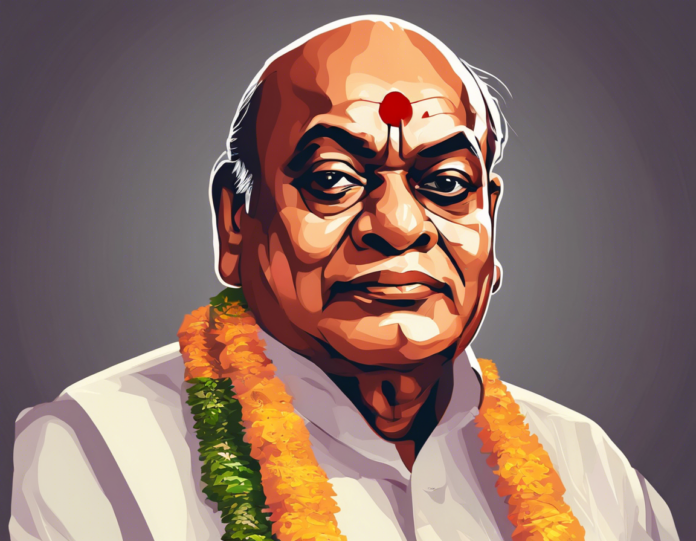Introduction
India, renowned for its rich history and diverse culture, has seen immense growth and development in the past few decades. One of the key figures behind this transformation is Pamulaparti Venkata Narasimha Rao, commonly known as P. V. Narasimha Rao. Serving as the Prime Minister of India from 1991 to 1996, Narasimha Rao played a pivotal role in shaping the country’s economic policies and steering it towards liberalization and globalization. Often referred to as the “Architect of Modern India”, Narasimha Rao’s tenure marked a significant shift in India’s economic and political landscape.
Early Life and Political Career
Born on June 28, 1921, in a small village in the southern state of Telangana, Narasimha Rao had humble beginnings. He joined the Indian National Congress during the Indian independence movement and quickly rose through the ranks, showcasing his competence and leadership abilities. Over the years, he held various roles within the Congress party, including serving as a minister in the state government of Andhra Pradesh.
Historic Reforms and Policies
Narasimha Rao’s tenure as Prime Minister is widely regarded as a turning point in India’s economic history. Faced with a severe economic crisis in 1991, his government took bold and unprecedented steps to liberalize the economy, dismantling the License Raj and opening up various sectors to private investment. These reforms, collectively known as the “New Economic Policy,” laid the foundation for India’s economic growth in the years to come.
Key Reforms Introduced by Narasimha Rao:
- Liberalization: Narasimha Rao relaxed restrictions on foreign investment and reduced trade barriers, allowing for greater participation in the global economy.
- Privatization: Under his leadership, state-owned enterprises were gradually privatized, leading to increased efficiency and competition in various sectors.
- Fiscal Reforms: Narasimha Rao implemented measures to control inflation, reduce fiscal deficits, and stabilize the Indian rupee.
- Financial Sector Reforms: He initiated banking sector reforms, paving the way for the modernization and restructuring of India’s financial institutions.
Legacy and Impact
Narasimha Rao’s bold economic reforms transformed India’s economy and set the stage for its emergence as a global economic powerhouse. His pragmatic approach to governance and ability to navigate complex political landscapes were instrumental in pushing forward these reforms. Despite facing challenges from within his own party and opposition groups, Narasimha Rao’s determination and vision for a modern India were unwavering.
Criticism and Controversies
While Narasimha Rao’s economic reforms were widely praised, his tenure was not without controversy. Critics pointed to instances of corruption within his administration and raised concerns about his handling of communal conflicts, most notably the Babri Masjid demolition in 1992. Despite these criticisms, his contributions to India’s economic growth and stability remain undeniable.
Honors and Recognition
In recognition of his contributions to the nation, Narasimha Rao was posthumously awarded India’s highest civilian honor, the Bharat Ratna, in 2014. His legacy continues to inspire politicians and policymakers, serving as a reminder of the power of bold and decisive leadership in transforming a nation.
Conclusion
P. V. Narasimha Rao’s legacy as the “Architect of Modern India” is a testament to his visionary leadership and unwavering commitment to economic reform. His tenure as Prime Minister marked a pivotal moment in India’s history, setting the country on a path towards economic liberalization and global integration. While his legacy may be debated, there is no denying the profound impact Narasimha Rao had on shaping India’s future.
Frequently Asked Questions (FAQs)
1. What were some of the key challenges Narasimha Rao faced during his tenure as Prime Minister?
Narasimha Rao inherited a faltering economy burdened with high fiscal deficits, a balance of payments crisis, and a bloated public sector. He had to navigate these challenges while also managing political pressures within his own party.
2. How did Narasimha Rao’s economic reforms impact India’s growth trajectory?
His economic reforms laid the foundation for sustained economic growth by promoting private investment, encouraging competition, and modernizing India’s financial sector. These reforms helped transform India into a prominent player in the global economy.
3. How did Narasimha Rao approach diplomatic relations with other countries during his tenure?
Narasimha Rao was known for his pragmatic approach to foreign policy, focusing on improving relations with neighboring countries and strengthening India’s position on the global stage. His tenure saw significant developments in India’s diplomatic relations, particularly with the United States and Southeast Asian countries.
4. What is the significance of Narasimha Rao’s tenure in the context of Indian politics?
Narasimha Rao’s tenure marked a shift towards coalition politics in India, where no single party held a clear majority. His ability to navigate these complex political dynamics and push through critical reforms showcased his leadership skills and strategic acumen.
5. How is Narasimha Rao remembered in India today?
While Narasimha Rao’s legacy remains a topic of debate, he is widely recognized for his contributions to India’s economic growth and stability. His tenure as Prime Minister is seen as a transformative period in India’s history, setting the stage for its emergence as a global economic powerhouse.
6. Did Narasimha Rao face opposition from within his own party for his economic reforms?
Yes, Narasimha Rao faced significant opposition from within the Congress party for his economic reforms, as they challenged traditional socialist policies and practices. However, his perseverance and strategic maneuvering enabled him to push through these reforms and leave a lasting impact on India’s economic landscape.
7. How did Narasimha Rao handle communal tensions and conflicts during his tenure?
Narasimha Rao faced criticism for his handling of communal conflicts, particularly the Babri Masjid demolition in 1992. Critics argue that his government’s response was inadequate, leading to widespread violence and unrest. Despite these challenges, his focus on economic reforms remained a central aspect of his governance.
8. What was the global perspective on Narasimha Rao’s economic reforms?
Narasimha Rao’s economic reforms were widely praised internationally for their boldness and impact on India’s economy. They positioned India as a key player in the global marketplace and attracted foreign investment, leading to significant growth and development.
9. How did Narasimha Rao’s background influence his approach to governance and policy-making?
Coming from a humble background, Narasimha Rao’s approach to governance was characterized by pragmatism, strategic thinking, and a deep understanding of economic principles. His experiences shaped his vision for a modern and prosperous India.
10. What lessons can current policymakers learn from Narasimha Rao’s tenure as Prime Minister?
Narasimha Rao’s tenure highlights the importance of decisive leadership, economic reform, and strategic planning in driving national development. Current policymakers can draw inspiration from his ability to navigate complex challenges and implement bold reforms for the benefit of the country.


